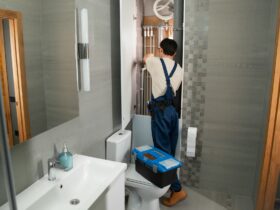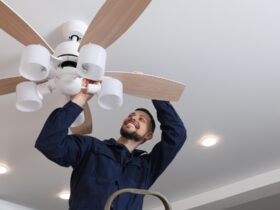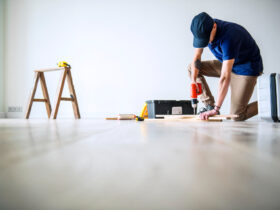Homeownership comes with its own set of challenges, one of which is ensuring your home remains structurally sound and free from hidden problems. One of the lesser-known issues that can develop beneath a home’s surface is a slab leak. These leaks occur when pipes located underneath the concrete foundation of your home begin to leak, potentially leading to extensive damage if left untreated. Understanding slab leaks is crucial to maintaining the integrity of your home and safeguarding against future plumbing catastrophes.
Understanding Slab Leaks
A slab leak refers to a leak in the plumbing system that runs beneath the concrete slab of a house. This plumbing includes hot and cold water pipes that provide fundamental services throughout your home. A leak might arise due to various factors, including shifting soil, corrosion, and excessive water pressure. The average cost of repairing slab leaks can reach several thousand dollars. Hence, homeowners need to remain vigilant and proactive in identifying potential indicators of these leaks.
When a slab leak occurs, water can escape into the surrounding soil, leading to numerous short and long-term complications. It’s good to understand that slab leaks can often be difficult to detect, since they’re hidden beneath your floors. Homeowners typically rely on visible signs of trouble, such as sudden increases in water bills, water pooling, warm areas on the floor, or an audible sound of running water, as indicators of a leak. These signs should prompt an immediate investigation.
Common Signs of Slab Leaks
One of the most evident signs of a slab leak is an unexpected spike in your water bill. This spike often results from water escaping unnoticed. If you discover that certain areas of your floor are warmer than others, it could indicate hot water is leaking from the pipes beneath your home. This disparity in temperature may be uncomfortable and lead to structural issues if not addressed promptly.
Another clue that slab leaks may be lurking is the appearance of mold or mildew around your home. Excessive moisture caused by a leak can create an ideal atmosphere for mold growth, which can lead to health concerns for those in your household. Homeowners may notice damp or discolored spots on the walls or floor coverings, which indicate that moisture is seeping through the foundation. Prompt action in addressing slab leaks is crucial to limit potential damage and ensure a safe living environment.
The Importance of Professional Inspection
While homeowners can often detect early warning signs of slab leaks, the complexities involved in an accurate diagnosis necessitate professional help. Engaging a qualified plumber can yield accurate assessments and timely solutions. Professionals are typically equipped with specialized tools to determine the precise location of the leak, minimizing unnecessary damage to the floors and walls. You should know that accurate slab leak detection can save homeowners from excessive costs associated with extensive repairs. Professionals offer insights into preventive measures, potentially helping homeowners mitigate future issues. Given the significant consequences that can arise from slab leaks, such as foundation damage, investing in a professional inspection is a wise and proactive choice. Depending upon the size and scale of the leak, the types of repairs may vary from simple patching to complete pipe replacement.
Preventing Slab Leaks
Taking preventive measures can significantly reduce the risk of encountering slab leaks. Regular maintenance, such as checking for pipe corrosion, is a vital proactive step that owners can take to ensure their plumbing remains in a state of good health. Investing in routine plumbing checks allows professionals to catch potential issues before they escalate.
Be mindful of excessive water pressure, as it can lead to undue stress on pipes over time. Keeping water pressure within a recommended range can significantly extend the lifespan of your plumbing system.
The soil composition beneath a home plays a crucial role in structural integrity. Expanding and contracting soil due to weather conditions can cause pipes to shift and crack. Homeowners should consider maintaining proper drainage around the foundation to ensure that water does not accumulate and negatively impact the soil’s stability. By addressing these foundational elements, owners can greatly reduce the likelihood of slab leaks occurring in the first place.
What to Do If You Suspect a Leak
If you suspect that your home may be experiencing a slab leak, taking immediate action is crucial. Begin by documenting any external signs, such as unusual moisture or temperature fluctuations. Next, consult with a professional plumber who specializes in slab leak detection. This involvement can guide you through the diagnostic process and provide peace of mind amid a potentially stressful situation.
During a professional inspection, be prepared to answer questions regarding your water usage history and specific symptoms you have noted. Doing so assists the plumber in accurately diagnosing the situation and developing an effective strategy for repair. They may utilize advanced technology such as acoustic leak sensors or infrared cameras to diagnose the problem accurately.
Common Myths About Slab Leaks
There are several myths surrounding slab leaks that can lead homeowners to overlook serious issues. One common misconception is that slab leaks are only prevalent in older homes. In reality, even newer constructions can experience these leaks due to various factors such as subpar plumbing materials or extreme environmental changes. Another myth is that homeowners can easily spot a slab leak by simply monitoring their water usage. While unusual spikes in water bills are indicative, only professional methods can truly ascertain the presence of a leak beneath concrete.
Another prevalent belief is that fixing a slab leak is always an extensive and invasive process. Although some situations may require significant repair work, many slab leaks can be resolved through trenchless repair methods, which are less destructive and often more cost-effective compared to traditional excavation methods. Understanding these myths can empower homeowners to seek timely assistance without letting misconceptions delay necessary action.
Slab leaks are a significant issue that many homeowners face. With the right knowledge and proactive measures, these issues can be identified and addressed promptly. Awareness of the signs, the importance of professional inspections, and preventive maintenance strategies is important in preventing costly repairs.
Dispelling the myths surrounding slab leaks can empower homeowners to make informed decisions about their plumbing health. Keeping a vigilant eye on your home and acting quickly upon any signs will help you maintain a safe and comfortable living environment.







Leave a Reply